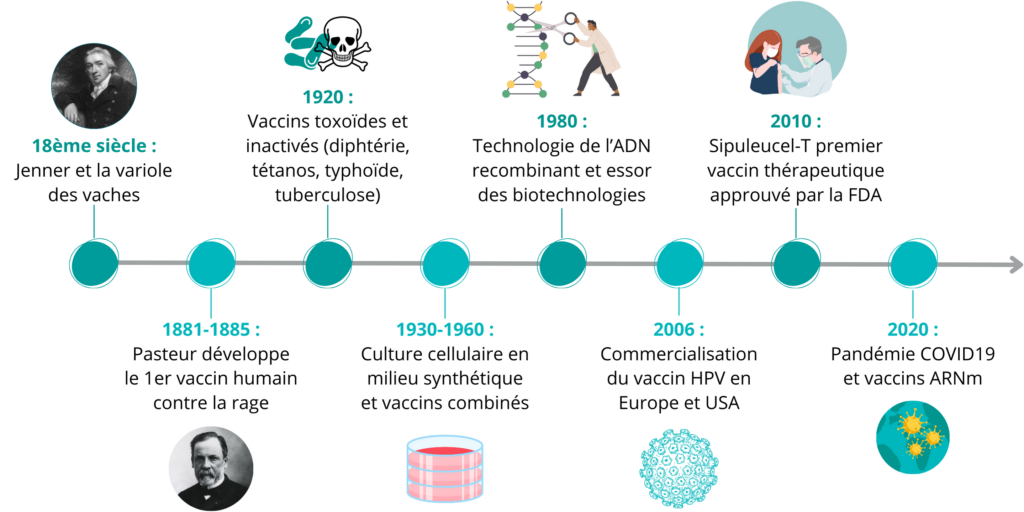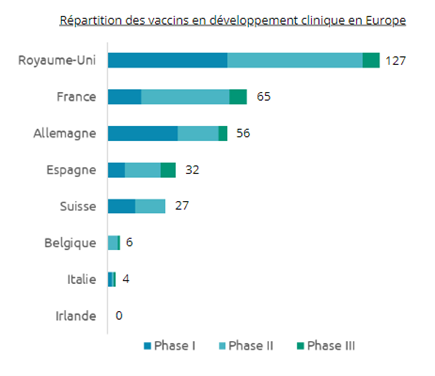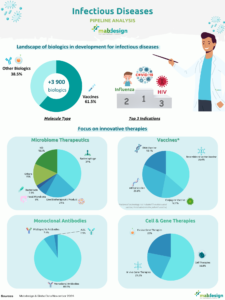Fuelled by decades of innovation, vaccines are an essential tool in the fight against disease. Historically focused on prophylaxis to prevent the spread of infectious diseases, new generations of vaccines are now being developed and/or are already available in other therapeutic areas including oncology. Historically focused on prophylaxis and infectious diseases, they are now opening up to new avenues of development, with a range of vaccine technologies, the positioning of vaccines as a new therapeutic tool, and the opening up of other therapeutic areas such as oncology.
150 years of innovation in vaccinology
The historic experiments of Jenner and Pasteur
The beginning of vaccination goes back to the end of the 18th century, when British physician Edward Jenner developedthe very first vaccine against smallpox, a disease that had been wreaking havoc for centuries. Jenner noticed that people exposed to a similar disease in cows, called cowpox or vaccinia, seemed to be protected during human smallpox epidemics. On the basis of this observation, and a shocking human experiment that has gone down in history, Jenner developed the first vaccination technique.
In the 19th century, Louis Pasteur created the first live attenuated vaccine based on a bacterium responsible for hen Cholera His work led to the development of the first attenuated human vaccine in 1885 : the Rabies vaccine. Louis Pasteur coined the term “vaccine” in honour of Jenner’s pioneer work on Vaccinia. Louis Pasteur thus paved the way for scientific thinking in disciplines such as infectiology and immunology, which led to the development of new types of vaccine.


The evolution of vaccine strategies
Between 1880 and 1930, vaccines based on modified pathogen toxins were developed and marketed: Diphtheria and Tetanus vaccines At the same time, the adjuvant effect of certain substances, such as aluminum salts, was discovered to increase the immunogenic power of vaccines by boosting the creation of antibodies.
After an era of vaccines based on the principles of pathogen attenuation, research turned to pathogen inactivation. From 1930 to 1960, virus culture methods progressed from chicken eggs or embryos to cell cultures on synthetic media. Multi-valent vaccines are also emerging, offering combined protection against several diseases at once (trivalent diphtheria-tetanus-polio vaccines, or measles-mumps-rubella, for example).
After the 1960s, biotechnology and genetic engineering led to advances in vaccination, with recombinant DNA and subunit vaccines based on bacterial or viral envelope proteins.
Today, there exist prophylactic vaccines designed to thwart over 20 severe infectious diseases, contributing to the extension of healthier lifespans across all age groups. Immunization presently prevents 3.5-5 million deaths annually.
Prophylactic vaccine efficacy is based on the concept that direct or indirect delivery of pathogen-derived antigens can induce a potent immune response in the human body leading to the acquired memory or protection against that specific pathogen. This initial potent response is now the basis of therapeutic vaccines whereby various immune-stimulation strategies are used to boost the body’s response to an ongoing disease primarily cancer. Sipuleucel-T, commonly known by its brand name Provenge, is the therapeutic vaccine approved in 2010 for the treatment of advanced prostate cancer. Fifteen cancer vaccines are now available globally.

Chronology of scientific advances related to vaccination
What’s next in the vaccinology field?
Vaccine innovation has played a major role in the prevention of infectious diseases for decades, paving the way for new prophylactic and therapeutic vaccination strategies.
Protecting against infectious diseases
Prophylactic vaccines remain the cornerstone of infectious disease prevention. Traditional vaccines continue to play a crucial role in the fight against viral diseases such as measles, polio and influenza. However, prophylactic vaccines are no longer limited to viral diseases: progress is also being made in the development of vaccines against bacterial and parasitic infections, broadening the scope of vaccination. Indeed, political, and social authorities have identified antibiotic resistance as a major public health concern, and vaccines are an essential weapon in the fight against it.
Fighting established diseases
At the same time, there is growing enthusiasm for the emergence of therapeutic vaccines. These vaccines are designed to treat diseases rather than prevent them, adding to the therapeutic arsenal at our disposal. These innovations are not confined to the field of infectious diseases, as promising research is underway to develop therapeutic vaccines against cancer, exploiting the potential of the immune system to specifically target cancer cells and reinforce the anti-tumour response.
A range of new vaccine technologies
The diversity of vaccine approaches under development illustrates the strong spirit of innovation that continues to drive the sector.
Messenger RNA (mRNA) vaccines, for example, emerged as a major breakthrough during the Covid-19 pandemic, offering rapid flexibility to adapt to new pathogens. DNA vaccines, which introduce specific genes to stimulate an immune response, are also attracting growing interest. These revolutionary technologies bypass the need to grow the pathogen, speeding up the vaccine development process.
Subunit vaccines also have many advantages: focusing on specific parts of pathogens, often highly immunogenic proteins, these vaccines reduce the risk of side effects while maintaining high efficacy. Conjugate vaccines, which combine immunogenic components with carrier proteins, have also improved immune response, particularly in infants and young children.
Finally innovation in vaccines is also accompanied by in-depth exploration of production and distribution methods to ensure equitable global availability Efforts to overcome logistical and financial hurdles reflect a commitment to widespread immunization, which is essential if we are to meet the challenges of global health.
Vaccine market overview
Vaccines are among the most mature technologies on the biomedical market. A distinction is made between prophylactic products, which account for around 96% of marketed products, and therapeutic products, which are still in the minority.
The active pipeline contains 70% of products at non-clinical stage, i.e. in R&D and pre-clinical phases, and 30% in clinical phases.
Innovative technologies, based on mRNA or recombinant vectors, are present in large numbers in the pipeline, illustrating the hope raised by these innovations. Therapeutic vaccines are slightly less represented in the pipeline than prophylactic vaccines, with 34% versus 56% : nevertheless, when compared with marketed products, this figure also demonstrates the recent momentum in this approach. As expected, oncology indications dominate the therapeutic vaccine pipeline.
The French vaccine development pipeline is the 2nd largest in Europe, in both non-clinical and clinical phases. With 28 companies and an active pipeline of over 130 products, France boasts many small and medium-sized vaccine developers, far ahead of its German and Swiss neighbours. The UK is still far ahead, both in terms of number of companies and number of products in development.
Vaccines pipeline

Although vaccines are a well-known and historic family of biologics, the vaccine sector is still experiencing remarkable advances, as illustrated by the Covid-19 pandemic. Current innovations include the development of mRNA vaccines, offering a revolutionary approach to rapid development, as well as the rise of therapeutic vaccines, aimed at treating existing diseases.
As experts in biologics, our in-house experts at MabDesign are well-versed in vaccine technologies with an in-depth knowledge and understanding of both the vaccine market and its development. Please feel free to explore our range of services and contact us to discuss any biologics or bioprocessing project. We will be delighted to put our expertise to work to help you achieve your goals.
Sources
- MabDesign expertise and data
- GlobalData February 2024
- Vaccines and Immunization, Inserm
- WHO strategic priorities for combating antimicrobial resistance, 2022, WHO
- Vaccines, CEA
- 2023-2025 Consolider la politique vaccinale après la pandémie de Covid, 2023, LEEM



